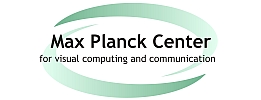| Foto | First Name | Last Name | Position |
|---|---|---|---|
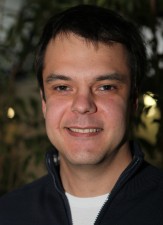 |
Mykhaylo | Andriluka | People Detection and Tracking |
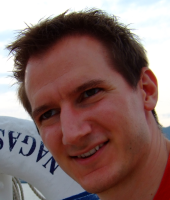 |
Roland | Angst | Vision, Geometry, and Computational Perception |
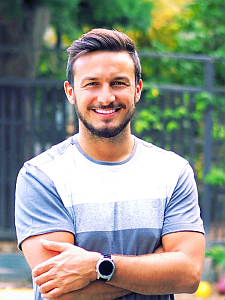 |
Tamay | Aykut | |
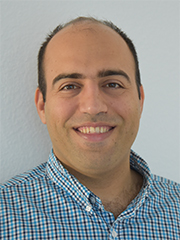 |
Vahid | Babaei | |
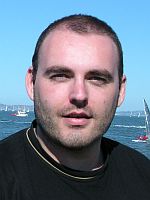 |
Pierpaolo | Baccichet | Distributed Media Systems |
 |
Volker | Blanz | Learning-Based Modeling of Objects |
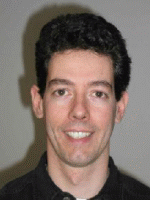 |
Volker | Blanz | Learning-Based Modeling of Objects |
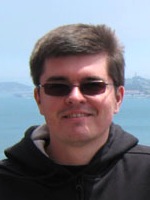 |
Martin | Bokeloh | Inverse Procedural Modeling |
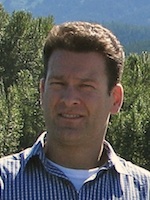 |
Adrian | Butscher | Geometry Processing and Discrete Differential Geometry |
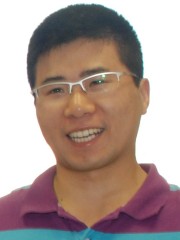 |
Renjie | Chen | Images and Geometry |
Researcher
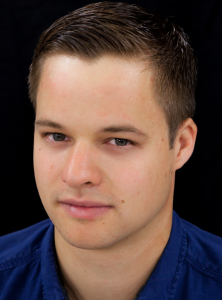 |
Dr. Michael Zollhöfer |
Visual Computing, Deep Learning and Optimization
| Name of Research Group: | Visual Computing, Deep Learning and Optimization |
| Homepage Research Group: | web.stanford.edu/~zollhoef |
| Personal Homepage: | zollhoefer.com |
| Mentor Saarbrücken: | Hans-Peter Seidel |
| Mentor Stanford: | Pat Hanrahan |
| Research Mission: | The primary focus of my research is to teach computers to reconstruct and analyze our world at frame rate based on visual input. The extracted knowledge is the foundation for a broad range of applications not only in visual effects, computer animation, autonomous driving and man-machine interaction, but is also essential in other related fields such as medicine and biomechanics. Especially, with the increasing popularity of virtual, augmented and mixed reality, there comes a rising demand for real-time low latency solutions to the underlying core problems. My research tackles these challenges based on novel mathematical models and algorithms that enable computers to first reconstruct and subsequently analyze our world. The main focus is on fast and robust algorithms that approach the underlying reconstruction and machine learning problems for static as well as dynamic scenes. To this end, I develop key technology to invert the image formation models of computer graphics based on data-parallel optimization and state-of-the-art deep learning techniques. The extraction of 3D and 4D information from visual data is highly challenging and under-constraint, since image formation convolves multiple physical dimensions into flat color measurements. 3D and 4D reconstruction at real-time rates poses additional challenges, since it involves the solution of unique challenges at the intersection of multiple important research fields, namely computer graphics, computer vision, machine learning, optimization, and high-performance computing. However, a solution to these problems provides strong cues for the extraction of higher-order semantic knowledge. It is incredibly important to solve the underlying core problems, since this will have high impact in multiple important research fields and provide key technological insights that have the potential to transform the visual computing industry. In summer 2019 Michael Zollhöfer joined Facebook. |
Researcher
- Name of Researcher
- Stefan Gumhold
- Homepage of Research Group
- First Name
- Stefan
- Last Name
- Gumhold
- Foto

- url_foto
- Homepage
- Phone
- Position
- 3D Animation Processing
- Mentor in Saarbruecken
- Mentor in Stanford
- Categories
- Former Groups
- Research Mission
- A 3D animation represents the geometry of a moving or deformable 3D object such as an agile animal or a liquid in motion. Previously 3D animations have mostly been synthesized automatically through physically based simulations and procedural modeling or handmade by a skilled designer time-step by time-step. In recent years significant advances have been made in all kinds of 3D acquisition technology: computer tomography, magnetic resonance imaging, ultrasonic imaging and structured light or multi-stereo based 3D video scanning. This will demand for a wide range of different processing tools for acquired 3D animation in the near future. The work of research group 3 is devoted to the generalization of processing techniques for static geometry to the dynamic case. Theoretical and practical issues will be investigated and the basic principles for the efficient representation and processing of 3D animations will be deduced. An underlying technical problem of 3D animation processing is the tremendous size of the acquired or calculated raw data. On the other hand forces the inertia inherent to our physical world a large amount of redundancy into dynamic geometry. Therefore will be the most elementary processing task the elimination of this redundancy from the representation. In the first stage of this project compact representations of the raw animation data will be developed that allow for the fast data-access necessary for further processing. Two further fundamental issues play an important role in 3D animation processing. The first one is the ability of a change in topology, which arises whenever a deformable model splits apart or grows into itself. The geometrical description of the object becomes singular at these critical points in time; a surface representation for example becomes non manifold. This demands for more general data structures with flexible incremental update operations. The second issue concerns changes in the parameterization. The efficiency of most processing algorithms builds on well behaved parameterizations, i.e. mappings to 2D with low distortion or surface tessellations with nicely shaped elements. The surface of a deformable model can drastically shrink or expand over time, such that also a well behaved parameterization must be dynamic. In the second stage of the project efficient data structures for animated 3D geometry will be designed that allow for changed in topology and parameterization. Equipped with efficient representation will the third stage of the project be devoted to the generalization of the most important processing tasks for the dynamic case: reconstruction of dynamic surfaces from animated point clouds, segmentation of 3D image time series, simplification and multi-resolution modeling in the space-time domain and continuative processing tasks like animation repair, animation smoothing and animation editing.
- mission_rtf
- Name of Research Group
Personal Info
- Photo

- Website, Blog or Social Media Link
